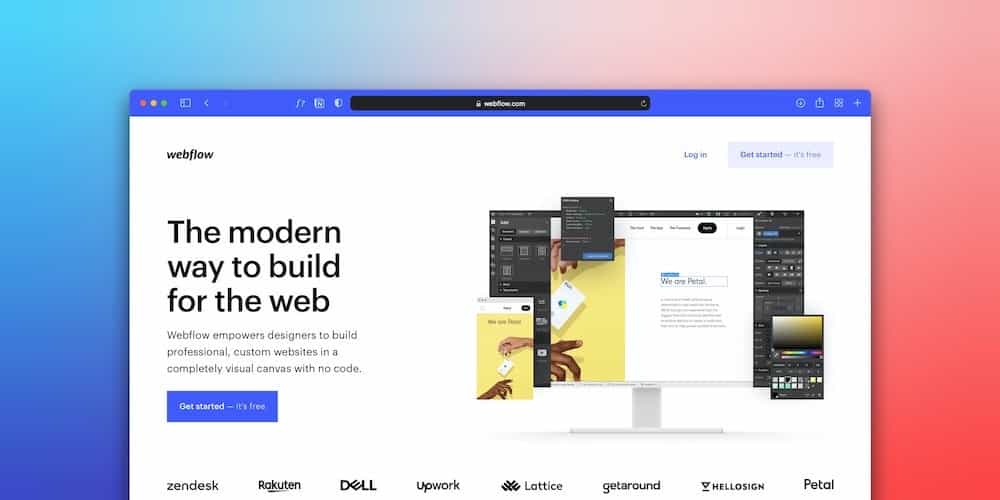We're living in exciting times for B2B marketing. New technologies and channels are emerging, buyer behavior is evolving, and the old playbooks are being tossed out. As we head into 2023, B2B marketers have a tremendous opportunity to engage their audiences in new ways and drive meaningful business results.
In this post, I'll share my top B2B marketing tips and strategies to help you succeed in the coming year. These are the critical focus areas where I recommend investing time, resources and creative thinking to stay ahead of the competition.

Double Down on Content Marketing
Content remains king in B2B marketing. But as audiences get overwhelmed with generic, self-promotional content, it's more important than ever to tell compelling stories that engage and inspire.
Focus on education over promotion. Buyers are doing their own research online and want content that helps them solve problems, not sales pitches in disguise. Create detailed guides, teach thought leadership and provide value through your content.
Invest in high-quality content creation. Don't rely solely on quick blog posts. Develop in-depth resources like ebooks, courses, research reports and interactive tools that build authority and capture audience attention.
Repurpose and expand on your best content. Take your most popular assets and find new ways to update, expand and promote them across channels. This amplifies the reach while optimizing your content spend.
Personalize content experiences. Use data and testing to tailor content to individual buyer stages and interests. This increases relevance and conversions.

Embrace Account-Based Marketing (ABM)
ABM focuses marketing efforts on targeted accounts rather than broad buyer segments. This strategic approach is gaining traction fast as B2B buying gets more complex.
Identify your ideal accounts. Profile your best customers and isolate common factors to define your total addressable market. Focus on accounts with the most potential value.
Create personalized campaigns. With defined target accounts, you can personalize messaging, content and experiences across channels to align with their needs.
Coordinate sales and marketing. ABM requires tight alignment between sales and marketing. Develop coordinated plays to execute campaigns across departments.
Measure engagement. Track engagement within your target accounts as the key metric of ABM success. Increased click rates, form fills and site visits signal it's working.

Make LinkedIn a Priority
With 850 million members, LinkedIn is the go-to channel for B2B. But many marketers still underutilize its potential to connect with decision-makers, build relationships and demonstrate thought leadership.
Publish original long-form content. Showcase your team's expertise by publishing posts, articles and other content natively on LinkedIn.
Engage in industry discussions. Join and contribute to relevant LinkedIn Groups to position yourself as an authority.
Run sponsored content campaigns. Promote your best articles, gated content and videos via LinkedIn's powerful targeted advertising capabilities.
Utilize Sales Navigator. The premium Sales Navigator tool provides sales intelligence on prospects to improve outreach and increase pipeline.
Follow Company Pages. Stay up-to-date on customers, prospects and competitors by following their company pages for news and updates.

Lean Into Video Marketing
Video marketing is booming across B2B channels. But rather than hard-sell product videos, audiences respond best to educational and story-driven content.
Develop video series. Create recurring video franchises tailored to different audience interests and buying stages. For example, an "Expert Q&A" series or "Customer Success Stories."
Go behind the scenes. Give viewers insider access to your company culture, employees, processes and values through vlogs and behind-the-scenes videos.
Optimize for organic reach. Include keywords, transcripts and meta descriptions so videos can be discovered in searches. Promote videos natively on LinkedIn and YouTube.
Leverage live streams. Host live Q&As, virtual events, product demos, trainings and more using platforms like LinkedIn Live, Vimeo and Facebook.
Repurpose segments as short clips. Cut short excerpts and snippets from existing videos to share across social media.

Prioritize Product-Led Growth
Product-led growth relies on the product itself to organically attract, retain and expand user base. This inside-out approach is gaining momentum as low-touch and scalable.
Offer a fully-featured free trial. Remove friction and enable users to experience the full benefits first-hand rather than limited demos.
Structure offerings for seamless upgrades. Make it easy for free users to convert to paid plans and current customers to expand usage.
Build educational resources into products. Directly integrate how-to content, onboarding guides and interactive tutorials into the user experience.
Cultivate referrals and word-of-mouth. Incentivize sharing and referrals by current users to activate organic growth channels.
Analyze usage data. Optimize the user journey by studying funnel conversion rates, adoption metrics and user behavior within the product.

Invest in Brand Storytelling
B2B buyers are getting savvier and more skeptical of traditional marketing messages. Telling an authentic brand story helps make meaningful emotional connections.
Spotlight your "why". Consumers increasingly want to align with brands with purpose. Communicate your values, mission and impact.
Leverage thought leadership. Position executives and employees as trusted subject matter experts through speaking engagements, media features and contributed articles.
Share customer success stories. User testimonials that highlight specific challenges and measurable results are powerful social proof.
Use multi-media content. Combine video storytelling, long-form posts, podcast interviews and more to showcase brand narrative from different angles.
Promote culture and values. Give inside looks at real employees, culture initiatives and work environments to humanize your brand.
Make The Most of In-Person Events
In-person events are making a major comeback. When leveraged strategically, events can uniquely engage buyers through immersive brand experiences.
Nurture event relationships. Identify key attendees to target for follow-up and personalized sales outreach post-event while interest is piqued.
Create buzz with live content. Develop original presentations, trainings, workshops and other content to share live on stage. Then repurpose it across channels.
Maximize touchpoints. From email campaigns to branded giveaways and signage, use the full event ecosystem to reinforce messaging.
Experiment with formats. Try fresh spins on standard conference approaches, like inviting influencers to host interactive sessions or organizing off-site activities.
Capture event learnings. Track event performance through surveys, engagement metrics, lead quality and sales cycle impacts to optimize future events.

Leverage Marketing Automation
Marketing automation solutions like Marketo, HubSpot and Pardot allow you to orchestrate complex campaigns and workflows to align with the buyer journey.
Track website behavior. Monitor prospect activity like page visits and form fills to deliver targeted follow-up messages.
Lead score and nurture. Automate lead scoring to route prospects to appropriate nurturing tracks based on interests and site behavior.
Create email journeys. Guide prospects through a series of educational emails tailored to their needs.
Integrate with CRM. Sync your automation platform and CRM solution to unify prospect and customer data.
Test and optimize. Constantly refine campaigns by A/B testing emails, landing pages and forms to increase conversions.

Adopt A Data-First Approach
With so many martech solutions and data sources, it's essential to develop a data-driven approach to glean insights and guide decisions:
Connect disparate data. Pull together siloed data from CRM, web analytics, marketing automation and more into a centralized reporting tool.
Analyze campaign performance. Review metrics across channels to determine where to double down on investments.
Mine customer data. Apply segmentation and predictive analysis to uncover hidden customer insights for targeting.
Establish KPIs. Define and track specific marketing KPIs aligned to revenue goals to quantify impact and guide optimization.
Build dynamic dashboards. Centralize key metrics, campaign results and segmentation analysis into cross-functional reporting dashboards.
The most effective marketing today combines creativity with advanced data capabilities to engage audiences and accelerate pipeline. By embracing the strategies and technologies shaping modern B2B, you can future-proof your approach to drive standout results.
B2B marketing is rapidly changing, making it an exciting time for marketers who stay agile and think big. While the tips above provide a strong foundation, every company's marketing mix needs to be tailored to their unique audience, product and goals. By continually testing and optimizing based on hard data, your strategies will evolve over time. The brands positioned to win are those committed to long-term success by providing true value to their customers.
What B2B marketing trends and tactics are you most excited about for 2023?






